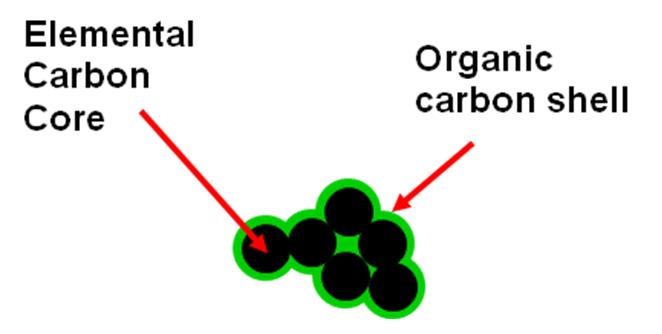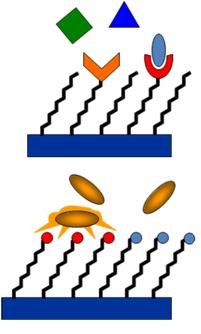Research
in our group broadly seeks to develop tailor-made functional surfaces that can
be used for understanding fundamental chemical processes at the molecular
level. Research activities are at the intersection of materials, analytical and
physical chemistry and the program offers opportunities for students and
postdoctoral researchers with diverse backgrounds to perform interdisciplinary
experimental research. Please check also the vacancies section for openings!
We
are interested in a variety of subjects that have surfaces and interfaces as a
common thread. We are currently focusing on three broad areas:
1) Understanding the chemistry of combustion
particulate matter via model surfaces

It
has been observed that numerous important heterogeneous reactions occur at
gas-carbon and liquid-carbon interfaces on carbon micro and nanoparticles
originating from combustion processes (soot). The use of model surfaces in order to
understand complex heterogeneous chemistry of environmental relevance has been
already applied to the study of aerosol chemistry, but suitable surfaces for
simulating combustion carbonaceous aerosols (see figure) have remained elusive.
Despite
the importance of combustion soot for establishing the extent to which our
environment is perturbed by human activities, few studies on well defined
surfaces have been utilised to investigate its chemistry. We would like to
tackle this problem by developing model carbon materials whose composition,
electronic structure and surface chemistry can be tailored to mimic different
types of soot and then study heterogeneous reactions of environmental
relevance.
2) Novel
nanoparticle based materials for pollutant remediation
The
area of waste management and remediation technologies is a growing field due to
the increasing level of industrial activities and the mounting global awareness
of its effects on the environment. Nanomaterials hold the promise of providing
new improved tools for waste management and pollution minimization. There are
already a large number of examples of rapid and environmentally friendly
applications of nanoparticles in pollutant remediation (e.g. TiO2,
iron, etc.). However, most of these examples are successful at the laboratory
scale whereas one of the great challenges in this research area is the
deployment of these technologies in the field.
We
want to leverage fundamental knowledge of surface chemistry and materials
science in order to address this issue. Some of the projects we are developing
involve a combination of materials synthesis, characterisation, kinetic and
transport studies in order to understand how to deliver nanomaterials to
polluted zones in a targeted fashion. Ultimately, we want to obtain materials
whose interfacial interactions with different media (e.g. groundwater, soils,
non-aqueous phases) are understood and can consequently be controlled in order
to become effective remediation agents in the real world.
3) Probing biorecognition processes with smart
surfaces

We
are interested in developing surface chemistries and detection approaches to
understand and transduce biorecognition events.
Solid/organic
interfaces that bear specific chemical functionalities can be used to both:
(a)
control the presentation of small molecules to biomolecules such as proteins or
nucleic acids, or to cells, in order to understand fundamental aspects of
recognition events in biology (see figure);
(b)
transduce a recognition event by taking advantage of the optical or electronic
properties of the solid for biotechnology applications.
Please
contact us if you want to know more about these projects!!!